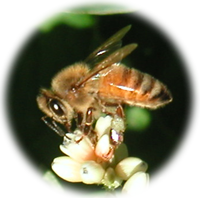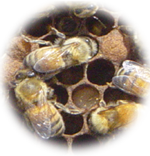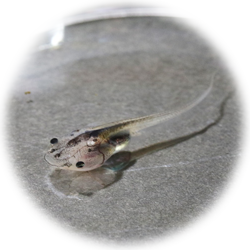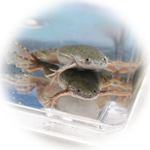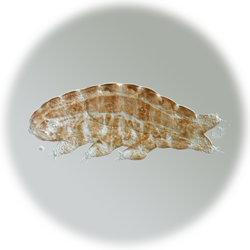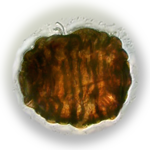
|
 Japanese / Japanese /  English English
|

Publications - Original papers since 1998 -
Kamata S, Kubo T, Kohno H. (2025) Analysis of molecular and cellular bases of honey bee mushroom body development. Sci. Rep. 15, 21462. https://doi.org/10.1038/s41598-025-06268-3 Tadano H, Kohno H, Takeuchi H, Kubo T. (2024) Unique spatially and temporary-regulated/sex-specific expression of a long ncRNA, Nb-1, suggesting its pleiotropic functions associated with honey bee lifecycle. Sci Rep 14, 8701. https://doi.org/10.1038/s41598-024-59494-6 Kohno H*, Kamata S and Kubo T. (2023) Analysis of antennal responses to motion stimuli in the honey bee by automated tracking using DeepLabCut. J. Insect Behav. 36, 332–346. https://doi.org/10.1007/s10905-023-09845-4 *:corresponding author Matsumura Y*, Kohno H*, and Kubo T. Possible functions of ecdysone signaling reiteratively used in the adult honey bee brain. Front. Bee Sci. 1 (Mini Review) https://doi.org/10.3389/frbee.2023.1251714 *: Equal contribution. Iino S, Oya S, Kakutani T, Kohno H, and Kubo T. (2023) Identification of ecdysone receptor target genes in the worker honey bee brains during foraging behavior. Sci. Rep. 13, 10491 https://doi.org/10.1038/s41598-023-37001-7 Kuwabara T, Kohno H*, Hatakeyama M, Kubo T.* (2023) Evolutionary dynamics of mushroom body Kenyon cell types in hymenopteran brains from multifunctional type to functionally specialized types. Sci. Adv. 9, eadd4201 *: Co-corresponding authors. Related press releases: UTokyo FOCUS https://www.u-tokyo.ac.jp/focus/en/press/z0508_00289.html EurekAlert! (US based newswire, for journalists) https://www.eurekalert.org/news-releases/987571 Matsumura Y, To T K, Kunieda T, Kohno H, Kakutani T, Takeo Kubo T. (2022) Mblk-1/E93, an ecdysone related-transcription factor, targets synaptic plasticity-related genes in the honey bee mushroom bodies. Sci. Rep. 12, 21367. https://doi.org/10.1038/s41598-022-23329-z Iino S, Shiota Y, Nishimura M, Asada M*, Ono, M* and Kubo T*. (2020) Neural activity mapping of bumble bee (Bombus ignitus) brains during foraging flight using immediate early genes. Sci. Rep. in press. *: corresponding authors Kumagai H†, Kunieda T†, Nakamura K†, Matsumura Y†, Namiki M, Kohno H, Kubo T. (2020) Developmental stage-specific distribution and phosphorylation of Mblk-1, a transcription factor involved in ecdysteroid-signaling in the honey bee brain. Sci. Rep. in press. †: Equal contribution Kohno, H.*, Kubo, T.* (2019) Genetics in the Honey Bee: Achievements and Prospects toward the Functional Analysis of Molecular and Neural Mechanisms Underlying Social Behaviors. Insects 10, 348. *:corresponding authors Suenami S*, Miyazaki R and Kubo T. (2018) Detection of phospholipase C activity in the brain homogenate from the honeybee. J. Vis. Exp. (2018) http://www.jove.com/video/58173 *: corresponding author. Suenami, S.†, Oya, S.†, Kohno, H.† and Kubo, T. (2018) Kenyon cell subtypes/populations in the honey bee mushroom bodies: possible function based on their gene expression profiles, differentiation, possible evolution, and application of genome editing. Mini Review, Front. Psychol. - Comparative Psychology (Edited by: Prof. Martin Giulfa) in press. †: equal contribution. Kohno, H. and Kubo T. (2018) mKast is dispensable for normal development and sexual maturation of the male European honeybee. Sci. Rep. 8(1):11877 *This article was featured in the UTokyoFOCUS: Researchers produce first-ever heterozygous mutant honeybee Progress toward functional analysis of sociality-related genes https://www.u-tokyo.ac.jp/focus/en/articles/z0508_00043.html Fujita, T., Kozuka-Hata, H., Hori, Y., Takeuchi, J., Kubo, T., Oyama, M. Shotgun proteomics deciphered age/division of labor-related functional specification of three honeybee (Apis mellifera L.) exocrine glands. PLoS ONE in press (2018) Suenami S, Iino S, Kubo T. Pharmacologic inhibition of phospholipase C in the brain attenuates early memory formation in the honeybee (Apis mellifera). Biology Open (in press). Oya S, Kohno H, Kainoh Y, Ono M, Kubo T. (2017) Increased complexity of mushroom body Kenyon cell subtypes in the brain is associated with behavioral evolution in hymenopteran insects. Sci. Rep. 7, 13785 Yamane A, Kohno H, Ikeda T, Kaneko K, Ugajin A, Fujita T, Kunieda T, Kubo T. (2017) Gene expansion and immunohistpchemical analyses of mast suggest its late pupal and adult-specific functions in the honeybee brain. PLoS ONE 12(5): e0176809. Takayanagi-Kiya S*, Kiya T, Kunieda T and Kubo T. (2017) Mblk-1 Transcription factor family: its roles in various animals and regulation by NOL4 splice variants in mammals. Int. J. Mol. Sci. 18, 246 *: corresponding author. Kohno H, Suenami S, Takeuchi T, Sasaki T and Kubo T. (2016) Production of knockout mutants by CRISPR/Cas9 in the European honeybee, Apis mellifera L. Zool. Sci. 33(5), 505-512. Ueno T, Kawasaki K, Kubo T. (2016) Single-cohort colonies and hormone treatment of worker honeybees to analyze physiology associated with role and/or endocrine system. J Visualized Exp http://www.jove.com/video/54240 Kaneko K, Suenami S, Kubo T. (2016) Gene expression profiles and neural activities of Kenyon cell subtypes in the honeybee brain: Identification of novel ‘middle-type’ Kenyon cells (review). Zool. Lett. 2:14 Suenami S, Paul RK, Takeuchi H, Okude G, Fujiyuki T, Shirai K and Kubo T. (2016) Analysis of the differentiation of Kenyon cell subtypes using three mushroom body-preferential genes during metamorphosis in the honeybee (Apis mellifera L.). PLoS ONE 11(6): e0157841 Ueno, T., Takeuchi, H., Kawsaki, K., and Kubo, T. (2015) Changes in the gene expression profiles of the hypopharyngeal gland of worker honeybees in association with worker behavior and hormonal factors. PLoS ONE 10(6): e0130206. Watanabe T, Kubo T. A new antigenic marker specifically labels a subpopulation of the class II Kenyon cells in the brain of the European honeybee Apis mellifera. Biophysics 11, 73-77 (2015) Takayanagi-Kiya S, Misawa-Hojo K, Kiya T, Kunieda T, Kubo T (2014) Splicing variants of NOL4 differentially regulate the transcription activity of Mlr1 and Mlr2 in cultured cells. Zoological Science 31, 735-740. Ugajin, A., Kunieda, T., Kubo, T. (2013) Identification and characterization of an Egr ortholog as a neural immediate early gene in the European honeybee (Apis mellifera L.). FEBS Lett. 587, 3224. Kaneko, K., Ikeda, T.*, Nagai, M.*, Hori, S.*, Umatani, C., Tadano, H., Ugajin, A., Nakakoka, T., Paul, R. K., Fujiyuki, T., Shirai, K., Kunieda, K., Takeuchi, H. and Kubo, T. (2013) Novel middle-type Kenyon cells in the honeybee brain revealed by area-preferential gene expression analysis. PLoS ONE 8, e71732. Shiota, Y. and Kubo, T. (2013) Ecdysteroids and Honeybee Social Bheviors. In: Hormones and Behavior (Ed: Simonsen, D.) eBook, NOVA Science Publishers., 135-156. Taketoshi Kiya *, Atsushi Ugajin, Takekazu Kunieda, Takeo Kubo (2012) Identification of kakusei, a nuclear non-coding RNA, as an immediate early gene from the honeybee, and its application for neuroethological study Intl. J. Mol. Sci. 13(12), 15496-15509. Fujita, T., Kozuka-Hata, H., Ao-Kondo, H., Kunieda, T., Oyama, M. and Kubo, T. (2012) Proteomic analysis of the royal jelly and characterization of the functions of its derivation glands in the honeybee. J. Proteomic Res. 12(1), 404-411. Uno, Y., Fujiyuki, T., Morioka, M and Kubo, T. (2012) Mushroom body-preferential expression of proteins/genes involved in endoplasmic reticulum Ca2+-transport in the worker honeybee (Apis mellifera L.) brain. Insect Mol.Biol. 22(1), 52-61. Ugajin, A., Kiya, T., Kunieda, T., Ono, M., Yoshida, T. and Kubo, T. (2012) Detection of neural activity in the brains of Japanese honeybee workers during the formation of a “hot defensive bee ball” PLoS ONE 7(3), e32902. Kubo, T. (2012) Neuroanatomical dissection of the honeybee brain based on temporal and regional gene expression patterns. In: Honeybee neurobiology and Behavior. A Tribute to Randolf Menzel (eds. Galizia CG, Eisenhardt D and Giulfa M). Springer, . Kiya, T.† and Kubo, T. (2011) Dance type and flight parameters are associated with different mushroom body neural activities in worker honeybee brains. PLoS ONE 6(4), e19301. †: corresponding author Yamazaki, Y., Kiuchi, M., Takeuchi, H. and Kubo, T. (2011) Ecdysteroid biosynthesis in workers of the European honeybee (Apis mellifera L.). Insect Biochem. Mol. Biol. 41, 283-293. Fujita, T., Kozuka-Hata, H., Uno, Y., Nishikori, K., Morioka, M., Oyama, M. and Kubo, T. (2010) Functional analysis of the honeybee (Apis mellifera L.) salivary system using proteomics. Biochem. Biophys. Res. Commun. 397, 740-744. Kaneko, K., Hori, S.*, Morimoto, M. M.*, Nakaoka, T., Paul, R. K., Fujiyuki, T., Shirai, K., Wakamoto, K., Tsuboko, S., Takeuchi, H. and Kubo, T. (2010) In situ hybridization analysis of the expression of futsch, tau, and MESK2 homologues in the brain of the European honeybee (Apis mellifera L.). PLoS ONE 5(2), e9213. *: equal contribution Watanabe, T.*, Takeuchi, H. and Kubo, T.* (2010) Structural diversity and evolution of the N-terminal isoform-specific region of ecdysone receptor-A and -B1 isoforms in insects. BMC Evol. Biol. 10, 40. *: corresponding authors Hori, S.*†, Kaneko K.*, Saito, T., Takeuchi, H. and Kubo, T. (2010) Expression of two microRNAs, ame-mir-276 and -1000, in the adult honeybee (Apis mellifera) brain. Apidologie 42, 89-102. †:corresponding author, *: equal contribution Kiya, T.* and Kubo, T. (2010) Analysis of GABAergic and non-GABAergic neuron activity in the optic lobes of the forager and re-orienting worker honeybee (Apis mellifera L.). PLoS ONE 5(1), e8833. *: corresponding author Hirotsu T, Hayashi Y, Iwata R, Kunitomo H, Kage-Nakadai E, Kubo T, Ishihara T and Iino Y. Behavioural assay for olfactory plasticity in C. elegans. Nat. Protocols 139 (2009) Tomoko Fujiyuki*, Emiko Matsuzaka, Takayoshi Nakaoka, Hideaki Takeuchi, Akiko Wakamoto, Seii Ohka, Kazuhisa Sekimizu, Akio Nomoto, and Takeo Kubo (2009) Distribution of Kakugo virus and its effects on the gene expression profile in the brain of the worker honeybee Apis mellifera L. J. Virol. 83(22), 11560-11568. *: corresponding author Makoto Hasegawa*, Satomi Asanuma*, Tomoko Fujiyuki*, Taketoshi Kiya*, Tetsuhiko Sasaki, Daisuke Endo, Mizue Morioka† and Takeo Kubo (2009) Differential gene expression in the mandibular glands of queen and worker honeybees, Apis mellifera L.: Implication for caste-selective aldehyde and fatty acid metabolism. Insect Biochem. Mol. Biol. 39, 661-667. *: equal contribution †: corresponding author Ueno, T., Nakaoka, T., Takeuchi, H.*, and Kubo, T.* (2009) Differential gene expressions in the hypopharyngeal glands of worker honeybees (Apis mellifera L.) associated with the age-dependent role change. Zoological Science 26(8), 557-563. *: corresponding authors Hiroto Tadano, Yurika Yamazaki, Hideaki Takeuchi*, and Takeo Kubo (2009) Differential expression associated with age-dependent division of labor and neural subtype-specific expression of a novel non-coding RNA, Nb-1, in the honeybee (Apis mellifera L.) worker brain. Insect Mol.Biol. 18(6), 715-726. *: corresponding author Hayashi, Y.†, Hirotsu, T., Iwata, R., Kage-Nakadai, E., Kunitomo, H., Ishihara, T., Iino Y. and Kubo, T. (2009) A trophic role for Wnt-Ror kinase signaling during developmental pruning in Caenorhabditis elegans. Nature Neurosci. 12, 981-987. †: corresponding author Nakaoka, T., Takeuchi, H.*, and Kubo, T. (2008) Laying workers in queenless honeybee (Apis mellifera L.) colonies have physiological states similar to that of nurse bees but opposite that of foragers. J Insect Physiol. 54, 806-812. *: corresponding author Kiya, T.†, Kunieda, T., and Kubo, T.† (2008) Inducible- and constitutive-type transcript variants of kakusei, a novel non-coding immediate early gene, in the honeybee brain. Insect Mol.Biol. 17(5), 531-536. †: corresponding author Kiya, T.†, Itoh, Y., and Kubo, T.† (2008) Expression analysis of the FoxP homologue in the brain of the honeybee, Apis mellifera L. Insect Mol.Biol. 17, 53-60. †: corresponding author Hori, S., Takeuchi, H.†, and Kubo, T. (2007) Associative learning and discrimination of motion cues in the harnessed honeybee Apis mellifera L. J. Comp.Physiol. A 193, 825-833. †: corresponding author Kiya, T.†, Kunieda, T., and Kubo, T.† (2007) Increased neural activity of a mushroom body neuron subtype in the brains of forager honeybees. PLoS ONE 4, e371. †: corresponding author Takeuchi, H.*†, Paul, R. K.*, Matsuzaka, E., and Kubo, T. (2007) EcR-A expression in the brain and ovary of the honeybee (Apis mellifera L.). Zoological Science 24(6), 596-603. *: equal contribution. †: corresponding author Uno, Y., Fujiyuki, T., Takeuchi, H., Morioka, M. and Kubo, T. (2007) Identification of proteins whose expression is up- or down-regulated in the mushroom bodies in the honeybee brain using proteomics. FEBS Lett. 581, 97-101. Hideaki Takeuchi. (2006) Gene expression in the Honeybee Brain Mushroom Body and its Gene Orthologues. In "Evolution of Nervous Systems. Vol1" Ed by Jpn H Kaas, Elsevier, pp 457-469. Ando, T.*, Fujiyuki, T.*, Kawashima, T.*, Morioka, M., Kubo, T.†, and Fujiwara, H.† (2006) In vivo gene transfer into the honeybee using a nucleopolyhedrovirus vector. Biochem. Biophys. Res. Commun. 352, 335-340 . *, equal contribution; †, corresponding authors Fujiyuki,T., Ohka,S., Takeuchi,H., Ono,M., Nomoto,A., and Kubo,T. (2006) Prevalence and phylogeny of Kakugo virus, a novel insect picorna-like virus that infects the honeybee (Apis mellifera L.), under various colony conditions. J. Virol. 80, 11528-11538 . Paul, R. K.*, Takeuchi, H.* and Kubo, T. (2006) Expression of two ecdysteroid-regulated genes, Broad-Complex and E75, in the brain and ovary of the honeybee (Apis mellifera L.). Zoological Science 23(12), 1085-1092. *: equal contribution. Kunieda, T. *, Fujiyuki, T.*, Kucharski, R.*, Foret, S.*, Ament, S. A.*, Toth, A.L.*, Ohashi, K, Takeuchi, H, Kamikouchi, A., Kage, E., Morioka, M., Beye, M.†, Kubo, T.†, Robinson, G.E.†, Maleszka, R.† (2006) Carbohydrate metabolism genes and pathways in insects: insights from the honey bee genome. Insect Mol.Biol. 15(5), 563-576. *, equal contribution; †, corresponding authors Lehman, H. K., Schulz, D. J., Barron, A. B., S. A., Wraight, L., Hardison, C., Whitney, S., Takeuchi, H., Paul, R. K., and Robinson, G. E. (2006) Division of labor in the honey bee (Apis mellifera): The role of tyramine beta-hydroxylase, J. Exp.Biol. 209, 2774-2784. Yamazaki, Y*., Shirai, K*., Paul, R. K., Fujiyuki, T., Wakamoto, A., Takeuchi, H., and Kubo, T. (2006) Differential expression of HR38 in the mushroom bodies of the honeybee brain depends on the caste and division of labor. FEBS Lett. 580, 2667-2670. *: equal contribution Hori, S.,Takeuchi, H†., Arikawa, K., Kinoshita, M., Ichikawa, N., Sasaki, M., and Kubo, T. (2006) Associative visual learning, color discrimination, and chromatic adaptation in the harnessed honeybee Apis mellifera L. J. Comp.Physiol. A 192, 691-700. †: corresponding author. 本論文はBiology Reports Ltd. の「Faculty of 1000」に重要論文として推薦されました。 Fujiyuki, T., Takeuchi, H., Ono, M., Ohka, S., Sasaki, T., Nomoto, A. and Kubo, T. (2005) Review. Kakugo virus from brains of aggressive worker honeybees, Adv. Vir. Res. 65 , 1-27 . Kage, E*., Hayashi, Y*., Takeuchi, H., Hirotsu, T., Kunitomo, H., Inoue, T., Arai, H., Iino, Y. and Kubo, T. (2005) MBR-1, a novel helix-turn-helix transcription factor, is required for pruning excessive neurites in Caenorhabditis elegans. Curr. Biol. 15, 1554-1559. *: equal contribution Paul, K. R*., Takeuchi, H*., Matsuo, Y. and Kubo, T. (2005) Gene expression of ecdysteroid-regulated gene E74 of the honeybee in ovary and brain. Insect Mol.Biol. 14, 9-15 . *: equal contribution Sawata, M., Takeuchi, H. and Kubo, T. (2004) Identification and analysis of the minimal promoter activity of a novel non-coding nuclear RNA gene, AncR-1, from the honeybee (Apis mellifera L.). RNA 10, 1047-1058 . Kunieda, T. and Kubo, T. (2004) In vivo gene transfer into the adult honeybee brain by using electroporation. Biochem. Biophys. Res. Commun. 318, 25-31 . Takeuchi, H., Yasuda, A., Yasuda-Kamatani, Y.,Sawata, M., Matsuo, Y., Kato, A., Tsujimoto, A., Nakajima, T. and Kubo, T. (2004) Prepro-tachykinin gene expression in the honeybee Apis mellifera L. brain. Cell Tissue Res. 316, 281-293 . Fujiyuki, T., Takeuchi, H., Ono, H., Ohka, S., Sasaki, T., Nomoto, A., and Kubo, T. (2004) A novel insect picorna-like virus identified in the brains of aggressive worker honeybees. J. Virol. 78, 1093-1100. Kamikouchi, A., Morioka, M. and Kubo, T. (2004) Identification of honeybee antennal proteins/genes expressed in a sex- and/or caste selective manner. Zoological Science 21, 53-62. Kubo, T. (2003) Molecular analysis of the honeybee sociality. In “Genes, Behaviors and Evolution of Social Insects (Eds: Kikuchi, T., Azuma, N. and Higashi, S.)” Hokkaido University Press, , pp. 3-20. Park, J.-M., Kunieda, T., and Kubo, T. (2003) The activity of Mblk-1, a mushroom body-selective transcription factor from the honeybee, is modulated by the Ras/MAPK pathway. J. Biol. Chem. 278, 18689-18694 . Takeuchi, H*., Yasuda, A*., Yasuda-Kamatani, Y*., Kubo, T. and Nakajima T. (2003) Identification of a tachykinin-related neuropeptide from the honeybee brain using direct MALDI-TOF MS and its gene expression in worker, queen, and drone heads. Insect Mol.Biol. 12, 291-298 . *: equal contribution Kunieda, T., Park, J.-M., Takeuchi, H. and Kubo, T. (2003) Identification and characterization of Mbr1, 2: two mouse homologues of Mblk-1, a transcription factor from the honeybee brain. FEBS Lett. 535, 61-65 . Sawata, M., Yoshino, D., Takeuchi, H., Kamikouchi, A., Ohashi, K. and Kubo, T. (2002) Identification of a novel gene, Ks-1, which encodes a non-coding nuclear RNA expressed in a restricted region of the honeybee brain. RNA 8, 772-785 . Takeuchi, H., Fujiyuki, T., Shirai, K., Matsuo, Y., Kamikouchi, A., Fujinawa, Y., Kato, A., Tsujimoto, A. and Kubo, T. (2002) Identification of genes expressed preferentially in the honeybee mushroom bodies by combination of differential display and cDNA microarray. FEBS Lett. 513, 230-234 . Park, J-M., Kunieda, T., Takeuchi, H., and Kubo, T. (2002) DNA binding properties of Mblk-1, a putative transcription factor from the honeybee. Biochem. Biophys. Res. Commun. 291, 23-28. Takeuchi, H., Kage, E., Sawata, M., Kamikouchi, A., Ohashi, K., Ohara, M., Fujiyuki, T., Kunieda, T., Sekimizu, K., Natori, S., and Kubo, T. (2001) Identification of a novel gene, Mblk-1, that encodes a putative transcription factor expressed preferentially in the large-type Kenyon cells of the honey bee brain. Insect Mol.Biol. 10, 487-494 . Kamikouchi, A., Takeuchi, H., Sawata, M., Natori, S., Kubo, T. (2000) Concentrated expression of Ca2+/ calmodulin-dependent protein kinase II and protein kinase C in the mushroom bodies of the brain of the honeybee Apis mellifera L. J. Comp. Neurol. 417, 501-510 . Ohashi, K., Sasaki, M., Sasagawa, H., Nakamura, J., Natori, S., Kubo, T. (2000) Functional Flexibility of the honeybee hypopharyngeal gland in a dequeened colony. Zoological Science 17, 1089-1094 . Ohashi, K., Natori, S., Kubo, T. (1999) Expression of amylase and glucose oxidase in the hypopharyngeal gland with an age-dependent role change of the worker honeybee (Apis mellifera L.). Eur. J. Biochem. 265 , 127-133 . Kamikouchi, A., Takeuchi, H., Sawata, M., Ohashi, K., Natori, S., Kubo, T. (1998) Preferential expression of the gene for a putative inositol 1,4,5-trisphosphate receptor homologue in the mushroom bodies of the brain of the worker honeybee Apis mellifera L. Biochem. Biophys. Res. Commun. 242, 181-186.
Deguchi M, Fukazawa T, Kubo T (2023) regeneration factors expressed on myeloid expression in macrophage-like cells is required for tail regeneration in Xenopus laevis tadpoles. Development 150(15), dev200467. doi: 10.1242/dev.200467 Kato S, Kubo T, Fukazawa T (2022) Effective enrichment of stem cells in the regenerating Xenopus laevis tadpole tails using the side population method. Dev. Growth Differ. 64, 290-296. doi: 10.1111/dgd.12797 Yanagi N*, Kato S*, Fukazawa T, Kubo T (2022) Cellular responses in the FGF10-mediated improvement of hindlimb regenerative capacity in Xenopus laevis revealed by single-cell transcriptomics. Dev. Growth Differ. 64, 266-278. doi: 10.1111/dgd.12795 *: equal contribution Suzuki S*, Sasaki K*, Fukazawa T, Kubo T (2022) Xenopus laevis il11ra.L is an experimentally proven interleukin-11 receptor component that is required for tadpole tail regeneration. Sci. Rep. 12, 1903. doi: 10.1038/s41598-022-05954-w *: equal contribution Kato S, Fukazawa T, Kubo T (2021) Low-temperature incubation improves both knock-in and knock-down efficiencies by the CRISPR/Cas9 system in Xenopus laevis as revealed by quantitative analysis. Biochem. Biophys. Res. Commun. 543, 50-55. Tsujioka H, Kunieda T, Katou Y, Shirahige K, Fukazawa T, Kubo T (2017) interleukin-11 induces and maintains progenitors of different cell lineages during Xenopus tadpole tail regeneration. Nature Commun. 8, 495. doi: 10.1038/s41467-017-00594-5 (UTokyo Research: Gene shown to induce undifferentiated cells during tadpole tail regeneration - Earliest stage of regeneration reproduced in lab) Hatta-Kobayashi Y, Toyama-Shirai M, Yamanaka T, Takamori M, Wakabayashi Y, Naora Y, Kunieda, Fukazawa T, Kubo T (2016) Acute phase response in amputated tail stumps and neural tissue-preferential expression in tail bud embryos of the Xenopus neuronal pentraxin I gene. Dev. Growth Differ. 58(9), 688-701. Furusawa Y, Kubo T, Fukazawa T (2016) Phyhd1, an XPhyH-like homologue, is induced in mouse T cells upon T cell stimulation. Biochem. Biophys. Res. Commun. 472(3), 551-556. Tsujioka H, Kunieda T, Katou Y, Shirahige K, Kubo T (2015) Unique Gene Expression Profile of the Proliferating Xenopus Tadpole Tail Blastema Cells Deciphered by RNA-Sequencing Analysis. PLoS ONE 10(3), e0111655. DOI: 10.1371/journal.pone.0111655 Naora Y, Hishida Y, Fukazawa T, Kunieda T, Kubo T (2013) Expression analysis of XPhyH-like during development and tail regeneration in Xenopus tadpoles: possible role of XPhyH-like expressing immune cells in impaired tail regenerative ability Biochem. Biophys. Res. Commun. 431(2), 152-157. *"Key Scientific Article" by Global Medical Discovery (http://globalmedicaldiscovery.com/) (2013.9.11) Fukazawa, T., Naora, Y., Kunieda, T. and Kubo, T. (2009) Suppression of the immune response potentiates tadpole tail regeneration during the refractory period. Development 136, 2323-2327. *"Must Read" by Faculty of 1000 Biology Reports Ltd. Ishino, T.*, Kunieda, T.*, Natori, S., Sekimizu, K., and Kubo, T. (2007) Identification of novel members of the Xenopus Ca2+-dependent lectin family and analysis of their gene expression during tail regeneration and development. J. Biochem. 141(4), 479-488. *: equal contribution Ishino, T., Shirai, M., Kunieda, T., Sekimizu, K., Natori, S. and Kubo, T. (2003) Identification of genes induced in regenerating Xenopus tadpole tails by using the differential display method. Dev. Dyn. 226, 317-325 . Arai, T., Kubo, T. and Natori, S. (2000) Identification, characterization and cDNA cloning of two novel proteins secreted into the external space of the regenerating leg of Periplaneta americana. Insect Biochem. Mol. Biol. 30, 287-295. Arai, T., Kawasaki, K., Kubo, T., Natori, S. (1998) Cloning of cDNA for regenectin, a humoral C-type lectin of Periplaneta americana, and expression of the regenectin gene during leg regeneration. Insect Biochem. Mol. Biol. 28, 987-294 . Kitabayashi-Nomura, A., Arai, T., Kubo, T., Natori, S. (1998) Molecular cloning of cDNA for p10, a novel protein that increases in the regenerating legs of Periplaneta americana (American cockroach). Insect Biochem. Mol. Biol. 28, 785-790.
Saigo T, Satoh K, Kunieda T (2024) Comparative study of gamma radiation tolerance between desiccation-sensitive and desiccation-tolerant tardigrades. Zool Sci, in press Kondo K, Tanaka A, Kunieda T (2024) Single-step generation of homozygous knockout/knock-in individuals in an extremotolerant parthenogenetic tardigrade using DIPA-CRISPR. PLOS Genet, 20(6), e1011298. doi: 10.1371/journal.pgen.1011298 Sugiura K, Yoshida Y, Hayashi K, Arakawa K, Kunieda T, Matsumoto M (2024) Sexual dimorphism in the tardigrade Paramacrobiotus metropolitanus transcriptome. Zoological Lett, 10, 11. doi: 10.1186/s40851-024-00233-0 Galas S, Le Goff E, Cazevieille C, Tanaka A, Cuq P, Baghdiguian S, Kunieda T, Godefroy N, Richaud M (2024) A comparative ultrastructure study of the tardigrade Ramazzottius varieornatus in the hydrated state, after desiccation and during the process of rehydration. PLOS ONE, 19(6), e0302552. doi: 10.1371/journal.pone.0302552 Al-Ansari M, Fitzsimons T, Wei W, Goldberg MW, Kunieda T, Quinlan R (2024) The major inducible small heat shock protein HSP20-3 in the tardigrade Ramazzottius varieornatus forms filament-like structures and is an active chaperone Cell Stress Chaperons, 29(1), 51-65. doi: 10.1016/j.cstres.2023.12.001 Tanaka A, Kunieda T* (2023) Considerations on the TardiVec-based analyses of tissue specificity and desiccation-induced supramolecular structure of target proteins. Proc Natl Acad Sci USA 120(48), e2312563120. doi: 10.1073/pnas.2312563120 Tanaka A, Nakano T, Watanabe K, Masuda K, Honda G, Kamata S, Yasui R, Kozuka-Hata H, Watanabe C, Chinen T, Kitagawa D, Sawai S, Oyama M, Yanagisawa M, Kunieda T* (2022) Stress-dependent cell stiffening by tardigrade tolerance proteins that reversibly form a filamentous network and gel. PLOS Biol 20(9), e3001780. doi: 10.1371/journal.pbio.3001780 Kumagai H#, Kondo K#, Kunieda T* (2022) Application of CRISPR/Cas9 system and the preferred no-indel end-joining repair in tardigrades. Biochem Biophys Res Commun 623, 196-201. #, equally contributed. doi: 10.1016/j.bbrc.2022.07.060 Sugiura K, Matasumoto M*, Kunieda T* (2022) Description of a model tardigrade Paramacrobiotus metropolitanus sp. nov. (Eutardigrada) from Japan with a summary of its life history, reproduction and genomics. Zootaxa 5134(1), 092-112. doi: 10.11646/ZOOTAXA.5134.1.4 Hara Y, Shibahara R, Kondo K, Abe W, Kunieda T (2021) Parallel evolution of trehalose production machinery in anhydrobiotic animals via recurrent gene loss and horizontal transfer. Open Biol 11, 200413. doi: 10.1098/rsob.200413 Furukawa S, Nagamatsu A, Nenoi M, Fujimori A, Kakinuma S, Katsube T,Wang B, Tsuruoka C, Shirai T, Nakamura AJ, Sakaue-Sawano A, Miyawaki A,Harada H, Kobayashi M, Kobayashi J, Kunieda T, Funayama T, Suzuki M, Miyamoto T, Hidema J, Yoshida Y, Takahashi A (2020) Space Radiation Biology for “Living in Space”. BioMed Res Int 2020, 4703286. doi:10.1155/2020/4703286 Sugiura K, Minato H, Suzuki AC, Arakawa K, Kunieda T, Matsumoto M (2019) Comparison of Sexual Reproductive Behaviors in Two Species of Macrobiotidae (Tardigrada: Eutardigrada). Zool Sci 36(2), 120-127. doi:10.2108/zs180103 Yoshida Y, Koutsovoulos G, Laetsch DR, Stevens L, Kumar S, Horikawa DD, Ishino K, Komine S, Kunieda T, Tomita M, Blaxter M and Arakawa K (2017) Comparative genomics of the tardigrades Hypsibius dujardini and Ramazzottius varieornatus. PLOS Biol 15(7), e2002266. doi:10.1371/journal.pbio.2002266. Hashimoto T and *Kunieda T (2017) DNA Protection Protein, a Novel Mechanism of Radiation Tolerance: Lessons from Tardigrades. Life 7(2), 26. doi:10.3390/life7020026 *corresponding author Hashimoto T1, Horikawa DD1, Saito Y, Kuwahara H, Kozuka-Hata H, Shin-I T, Minakuchi Y, Ohishi K, Motoyama A, Aizu T, Enomoto A, Kondo K, Tanaka S, Hara Y, Koshikawa S, Sagara H, Miura T, Yokobori S, Miyagawa K, Suzuki Y, Kubo T, Oyama M, Kohara Y, Fujiyama A, Arakawa K, Katayama T, *Toyoda A and *Kunieda T (2016) Extremotolerant tardigrade genome and improved radiotolerance of human cultured cells by tardigrade-unique protein. Nature Commun 7, 12808. doi: 10.1038/ncomms12808. 1,authors equally contributed. *corresponding author (UTokyo Research: Demystifying the resilience of water bears) Ito M1, Saigo T1, Abe W, Kubo T and *Kunieda T1 (2016) Establishment of an isogenic strain of the desiccation-sensitive tardigrade Isohypsibius myrops (Parachela, Eutardigrada) and its life history traits. Zool J Linn Soc 178(4), 863-870. doi: 10.1111/zoj.12449. 1:authors equally contributed. *corresponding author Kondo K, Kubo T and Kunieda T (2015) Suggested Involvement of PP1/PP2A Activity and De Novo Gene Expression in Anhydrobiotic Survival in a Tardigrade, Hypsibius dujardini, by Chemical Genetic Approach. PLoS ONE 10(12), e0144803. doi: 10.1371/journal.pone.0118272. Tanaka S, Tanaka J, Miwa Y, Horikawa DD, Katayama T, Arakawa K, Toyoda A, Kubo T, Kunieda T. (2015) Novel mitochondria-targeted heat-soluble proteins identified in the anhydrobiotic tardigrade improve osmotic tolerance of human cells. PLoS ONE 10(2), e0118272. doi: 10.1371/journal.pone.0118272. PMID: 25675104 Yamaguchi, A., Tanaka, S., Yamaguchi, S., Kuwahara, H., Takamura, C., Imajoh-Ohmi, S., Horikawa, D.D., Toyoda, A., Katayama, T., Arakawa, K., Fujiyama, A., Kubo, T., Kunieda, T. (2012) Two Novel Heat-Soluble Protein Families Abundantly Expressed in an Anhydrobiotic Tardigrade. PLoS ONE 7(8), e44209. doi:10.1371/journal.pone.0044209 http://www.plosone.org/article/info%3Adoi%2F10.1371%2Fjournal.pone.0044209 Horikawa DD, Yamaguchi A, Sakashita T, Tanaka D, Hamada N, Yukuhiro F, Kuwahara H, Kunieda T, Watanabe M, Nakahara Y, Wada S, Funayama T, Katagiri C, Higashi S, Yokobori S-I, Kuwabara M, Rothschild L J, Okuda T, Hashimoto H, and Kobayashi Y (2012) Tolerance of Anhydrobiotic Eggs of the Tardigrade Ramazzottius varieornatus to Extreme Environments Astrobiology 12(4), 283-289. Horikawa, D.D., Kunieda, T., Abe, W., Watanabe, M., Nakahara, Y., Yukuhiro, F., Sakashita, T., Hamada, N., Wada, S., Funayama, T., Katagiri, C., Kobayashi, Y., Higashi, S. and Okuda, T. (2008) Establishment of a Rearing System of the Extremotolerant Tardigrade Ramazzottius varieornatus: A New Model Animal for Astrobiology. Astrobiology 8(3), 1-8.
Yokoi S, Okuyama T, Kamei Y, Naruse K, Taniguchi Y, Ansai S, Kinoshita M, Young LJ, Takemori N, Kubo T, Takeuchi H. (2015) An essential role of the arginine vasotocin system in mate-guarding behaviors in triadic relationships of Medaka fish (Oryzias latipes). PLOS Genetics 11, e1005009 Tsuboko S, Kimura T, Shinya M, Suehiro Y, Okuyama T, Shimada A, Takeda H, Naruse K, Kubo T, Takeuchi H. (2014) Genetic control of startle behavior in medaka fish. PLoS ONE 9, e112527 Okuyama T, Yokoi S, Abe H, Isoe Y, Suehiro Y, Imada H, Tanaka M, Kawasaki T, Yuba S, Taniguchi Y, Kamei Y, Okubo K, Shimada A, Naruse K, Takeda H, Oka Y, Kubo T, Takeuchi H (2014) A neural mechanism underlying mating preferences for familiar individuals in medaka fish. Science 343, 91-94. Ochiai, T., Suehiro, Y., Nishinari, K., Kubo, T. and Takeuchi, H. (2013) A new data-mining method to search for behavioral properties that induce alignment and their involvement in social learning in medaka fish (Oryzias latipes). PLoS ONE 8, e71685. Okuyama, T., Isoe, Y., Hoki, M., Suehiro, Y., Yamagishi, G., Naruse, K., Kinoshita M., Kamei, Y., Shimizu, A., Kubo, T. and Takeuchi, H. (2013) Controlled Cre/loxP site-specific recombination in the developing brain in medaka fish, Oryzias latipes. PLoS ONE 8, e66597. Isoe, Y., Okuyama, T., Taniguchi, Y., Kubo, T. and Takeuchi, H. (2012) p53 mutation suppresses adult neurogenesis in medaka fish (Oryzias latipes) Biochem. Biophys. Res. Commun. 423(4), 627-631. Okuyama, T., Suehiro, Y., Imada, H., Shimada, A., Naruse, K., Takeda, H., Kubo, T. and Takeuchi, H.† (2011) Induction of c-fos transcription in the medaka brain (Oryzias latipes) in response to mating stimuli. Biochem. Biophys. Res. Commun. 404, 453-457. †: corresponding author Kuroyanagi, Y.*, Okuyama, T.*, Suehiro, Y., Imada, H., Shimada, A., Naruse, K., Takeda, H., Kubo, T. and Takeuchi, H. (2010) Proliferation zones in the adult medaka (Oryzias latipes) brain. Brain Res. 1323, 33-40. *: equal contribution Suehiro, Y., Kinoshita, M.†, Okuyama, T., Shimada, A., Naruse, K., Takeda, H., Kubo, T., Hashimoto, M.†, and Takeuchi, H.† (2010) Transient and permanent gene transfer into the brain of the teleost fish medaka (Oryzias latipes) using human adenovirus and the Cre-loxP system. FEBS Lett. 584,, 3545-3549. †: corresponding authors Imada, H., Hoki, M., Suehiro, Y., Okuyama, T., Kurabayashi, D., Shimada, A., Naruse, K., Takeda, H., Kubo, T., and Takeuchi, H.† (2010) Coordinated and cohesive movement of two small conspecific fish induced by eliciting a simultaneous optomotor response. PLoS ONE 5, e11248. †: corresponding author Suehiro, Y.*, Yasuda, A.*, Okuyama, T., Imada, H., Kuroyanagi, Y., Kubo. T. & Takeuchi, H.† (2009) Mass spectrometric map of neuropeptide expression and analysis of the g-prepro-tachykinin gene expression in the medaka (Oryzias latipes) brain. Gen. Comp. Endocrinol. 161, 138-145. *:equal contribution. †:corresponding author
Nishikori K, Morioka K, Kubo T, Morioka M. (2009) Age- and morph-dependent activation of the lysosomal system and Buchnera degradation in aphid endosymbiosis. J Insect Physiol. 55(4), 351-357. Nishikori K, Kubo T, Morioka M. (2009) Morph-dependent expression and subcellular localization of host serine carboxypeptidase in bacteriocytes of pea aphid associated with degradation of the endosymbiotic bacterium, Buchnera. Zoological Science 26(6), 415-420. Maezawa, K., Shigenobu, S., Taniguchi, H., Kubo, T., Aizawa, S. and Morioka, M. (2006) Hundreds of flagellar basal bodies cover the cell surface of the endosymbiotic bacterium Buchnera aphidicola sp. strain APS. J. Bacteriol. 188, 6539-6543 . Sasaki, T., Massaki, N., Kubo, T. (2005) Wolbachia variant that induces two distinct reproductive phenotypes in different hosts. Heredity 95, 389-393 . Hojo, M., Morika, M., Matsumoto, M., and Miura, T. (2005) Identification of soldier caste-specific protein in the frontal gland of nasute termite Nasutitermes takasagoensis (Isoptera: Termitidae). Insect Biochem. Mol. Biol. 35, 347-354 . Kutsukake, M.,Shibao, H., Nikoh, N., Morioka, M.,Tamura, T., Hishino, T., Phgiya, S. and Fukatsu, T. (2004) Venomous protease of aphid soldier for colony defense. Proc. Natl. Acad. Sci. USA. 101, 11338-11343. Fujii, Y., Kubo, T., Ishikawa, H. and Sasaki, T. (2004) Isolation and characterization of the bacteriophage WO from Wolbachia, an arthropod endosymbiont. Biochem. Biophys. Res. Commun. 317(4), 1183-1188. Tomoyasu, T., Takaya, T., Nagase, T., Kikuno, R., Morioka, M., and Yamamoto, T. (2003) A new heat shock gene, agsA, which encodes a small chaperone involved in suppressing protein aggregation in Salmonella enterica serovar Typhimurium. J. Bacteriol. 185, 6331-6339. Yamaguchi, Y., Tomoyasu, T., Takaya, A., Morioka, M., and Yamamoto, Y. (2003) Effects of disruption of heat shock genes on susceptibity of Escherichia coli to fluoroquinolones. BMC Microbiology 3, 16. Unno, K., Kishido, T., Morioka, M., and Oku, N. (2003) Increased expression of Hsp70 for resistance to deuterium oxide in a yeast mutant cell line. Biol. Pharm. Bull. 26(6) , 799-802 . Takaya, A., Tomoyasu, T., Tokumitsu, A., Morioka, M. and Yamamoto, T. (2002) The ATP-dependent Lon protease of Salmonella enterica serovar Typhimurium regulates invasion and expression of genes carried on Salmonella pathogenicity island 1. J. Bacteriol. 184 , 224-232 . Shimomura, S., Shigenobu, S., Morioka, M. and Ishikawa, H. (2002) An experimental validation of orphan genes of Buchnera, a symbiont of aphids. Biochem. Biophys. Res. Commun. 291, 263-267 . Sasaki, T., Kubo, T. and Ishikawa, H. (2002) Interspecific transfer of Wolbachia between two lepidopteran insects expressing cytoplasmic incompatibility: a Wolbachia variant naturally infecting Cadra cautella causes male killing in Ephestia kuehniella. Genetics 162, 1313-1319 . Shimomura, S., Shigenobu, S., Morioka, M. and Ishikawa, H. (2002) An experimental validation of orphan genes of Buchnera, a symbiont of aphids. Biochem. Biophys. Res. Commun. 292, 263-267. Matsumoto, K., Morioka, M. and Ishikawa, H. (1999) Phosphocarrier proteins in an intracellular symbiotic bacterium of aphids. J. Biochem. 126, 578-583. Morioka, M. and Ishikawa, H. (1998) Insect chaperonin 60: Symbionin. Methods Enzymol. 290, 181-193.
Iijima, R.*, Kunieda, T.*, Yamaguchi, S.*, Kamigaki, H., Fujii-Taira, I., Sekimizu, K., Kubo, T., Natori, S. and Homma, K.J. (2008) The Extracellular Adenosine Deaminase Growth Factor, ADGF/CECR1, Plays a Role in Xenopus Embryogenesis via the Adenosine/P1 Receptor. J. Biol. Chem. 283(4), 2255-2264. *: equal contribution. Namiki, T., Niwa, R., Sakudoh, T., Shirai, K., Takeuchi, H. and, Kataoka, H. (2005) Cytochrome P450 CYP307A1/Spook: a regulator for ecdysone synthesis in insects. Biochem. Biophys. Res. Commun. 337, 367-374. Nakata, A., Ito, T., Nagata, M., Hori, S. and Sekimizu, K. (2004) GRIP1τ, a novel PDZ domain-containing transcriptional activator, cooperates with the testis-specific transcription elongation factor SII-T1. Genes Cells. 9, 1125-1135 . Aozasa, N., Kubo, T., Sekimizu, K. and Natori, S. (2002) Identification and characterization of a Drosophila homologue of ATBP. Insect Mol.Biol. 11 , 31-36 . Aozasa, N., Shiraishi, H., Kobayashi, A., Sekimizu, K., Kubo, T. and Natori, S. (2001) Interaction between ATBP and DmUbc9 in the expression of the Sarcophaga lectin gene. Biochem. Biophys. Res. Commun. 286, 949-952. Aozasa, N., Shiraishi, H., Nakanishi-Matsui, M., Kobayashi, A., Sekimizu, K., Kubo, T. and Natori, S. (2001) Activation of the Sarcophaga lectin gene promoter by (A + T)-stretch binding protein. Eur. J. Biochem. 268, 2506-2511. Taira, Y., Kubo, T. and Natori, S. (2000) Participation of transcription elongation factor XSII-K1 in mesoderm-derived tissue development in Xenopus laevis. J. Biol. Chem. 275, 32011-32015. Shimoaraiso, M., Nakanishi, T., Kubo, T. and Natori, S. (2000) Transcription elongation factor S-II confers yeast resistance to 6-azauracil by enhancing expression of the SSM1 gene. J. Biol. Chem. 275, 29623-29627. Shiraishi, H., Kobayashi, A., Sakamoto, Y., Nonaka, T., Mitsui, Y., Aozasa, N., Kubo, T. and Natori, S. (2000) Molecular cloning and characterization of SRAM, a novel insect rel/ankyrin-family protein present in nuclei. J. Biochem. 127, 1127-1134. Ito, T., Seldin, MF., Taketo, MM., Kubo, T. and Natori, S. (2000) Gene structure and chromosome mapping of mouse transcription elongation factor S-II (Tcea1). Gene 244, 55-63. Miura, T., Kamikouchi, A., Sawata, M., Takeuchi, H., Natori, S., Kubo, T. and Matsumoto, T. (1999) Soldier caste-specific gene expression in the mandibular glands of Hodotermopsis japonica (Isoptera: termopsidae). Proc. Natl. Acad. Sci. USA. 96, 13874-13879. Ito, T., Seldin, MF., Taketo, MM., Kubo, T. and Natori, S. (1998) Gene organization and chromosome mapping of the testis-specific S-II. Mamm. Genome 9, 915-917. Taira, Y., Kubo, T. and Natori, S. (1998) Molecular cloning of cDNA and tissue-specific expression of the gene for SII-K1, a novel transcription elongation factor SII. Genes Cells. 3, 289-296.
|
